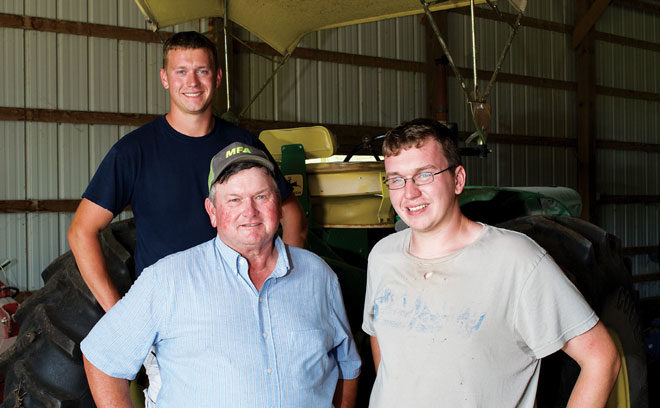No-Till Farmer
Get full access NOW to the most comprehensive, powerful and easy-to-use online resource for no-tillage practices. Just one good idea will pay for your subscription hundreds of times over.

Every farm faces at least some challenges adopting no-till practices. But when it comes to sticking with the practice, Ron Willis’ feelings on the matter are pretty clear.
Farming with his sons Michael and Matthew, Ron credits 32 years of continuous no-till for slowing down soil erosion and rebuilding soil tilth on their hilly, sloping 1,500-acre farm in northwest Missouri. Adding cover crops to the equation is speeding up the regeneration of soil organic matter, fortifying terraces, reducing fertilizer costs and helping to control weeds.
“You have a different weed control with no-till compared to tillage. But I’d just as soon take a beating as I would till the ground,” Ron says.
The Willises no-till corn, soybeans, wheat and hay near King City, Mo., and manage a 120-head Angus cow-calf operation, grazing grass pasture, hay and cover crops. In addition to seeding cereal rye as both a cover crop and for their own seed, they’re also using multi-species cover crop mixes, mostly behind wheat.
Their journey to no-till started in 1986 as they took advantage of a federal program that paid them to no-till 40 acres. Liking what they saw, the following year they purchased a no-till…